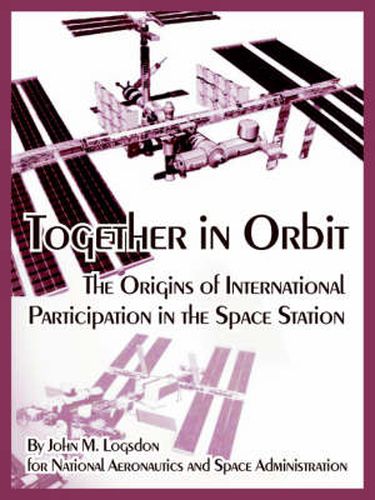Readings Newsletter
Become a Readings Member to make your shopping experience even easier.
Sign in or sign up for free!
You’re not far away from qualifying for FREE standard shipping within Australia
You’ve qualified for FREE standard shipping within Australia
The cart is loading…






This title is printed to order. This book may have been self-published. If so, we cannot guarantee the quality of the content. In the main most books will have gone through the editing process however some may not. We therefore suggest that you be aware of this before ordering this book. If in doubt check either the author or publisher’s details as we are unable to accept any returns unless they are faulty. Please contact us if you have any questions.
From virtually the beginning of the twentieth century, those interested in the human exploration of space have viewed as central to that endeavor the building of an Earth-orbital space station that would serve as the jumping-off point to the Moon and the planets. Always, space exploration supporters believed, a permanently occupied space station was a necessary outpost in the new frontier of space. The more technically minded recognized that once humans had achieved Earth orbit about 250 miles above the surface—the presumed location of any space station—the vast majority of the atmosphere and the gravity well would have been conquered, and then human beings were about halfway to anywhere they might want to go. Space station advocates also recognized that the scientific and technological challenge of building an Earth-orbital space station was daunting and that pooling the resources of many of the spacefaring nations of the world would maximize the probabilities of success. Thus, when the space station project was born in the in the mid-1980s, it almost immediately became an international program. This monograph describes the process of conceptualizing the international partnership and crafting its contours.
$9.00 standard shipping within Australia
FREE standard shipping within Australia for orders over $100.00
Express & International shipping calculated at checkout
This title is printed to order. This book may have been self-published. If so, we cannot guarantee the quality of the content. In the main most books will have gone through the editing process however some may not. We therefore suggest that you be aware of this before ordering this book. If in doubt check either the author or publisher’s details as we are unable to accept any returns unless they are faulty. Please contact us if you have any questions.
From virtually the beginning of the twentieth century, those interested in the human exploration of space have viewed as central to that endeavor the building of an Earth-orbital space station that would serve as the jumping-off point to the Moon and the planets. Always, space exploration supporters believed, a permanently occupied space station was a necessary outpost in the new frontier of space. The more technically minded recognized that once humans had achieved Earth orbit about 250 miles above the surface—the presumed location of any space station—the vast majority of the atmosphere and the gravity well would have been conquered, and then human beings were about halfway to anywhere they might want to go. Space station advocates also recognized that the scientific and technological challenge of building an Earth-orbital space station was daunting and that pooling the resources of many of the spacefaring nations of the world would maximize the probabilities of success. Thus, when the space station project was born in the in the mid-1980s, it almost immediately became an international program. This monograph describes the process of conceptualizing the international partnership and crafting its contours.